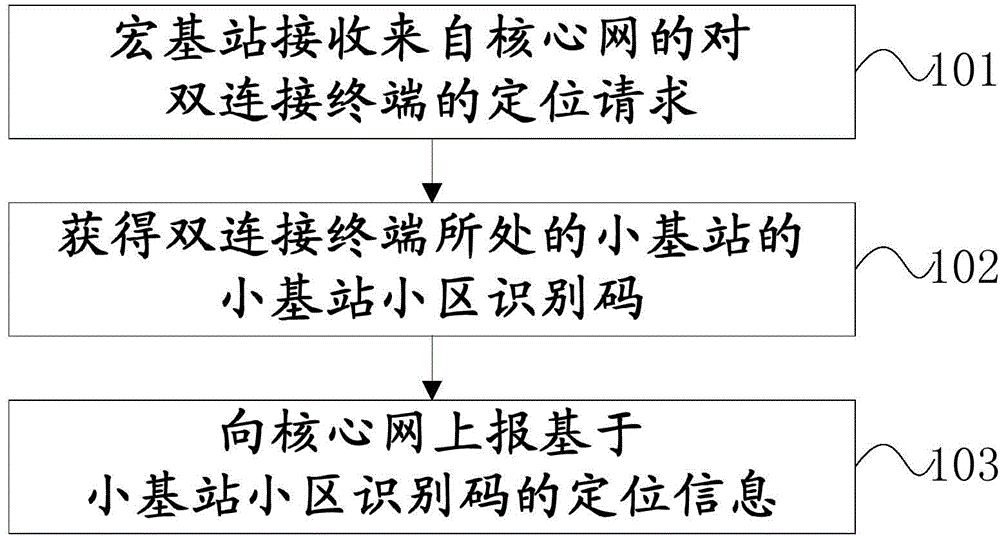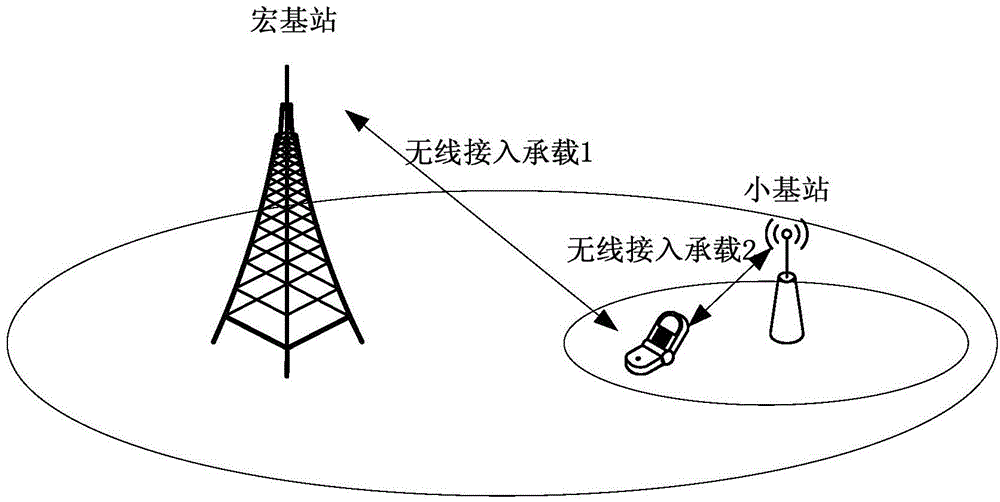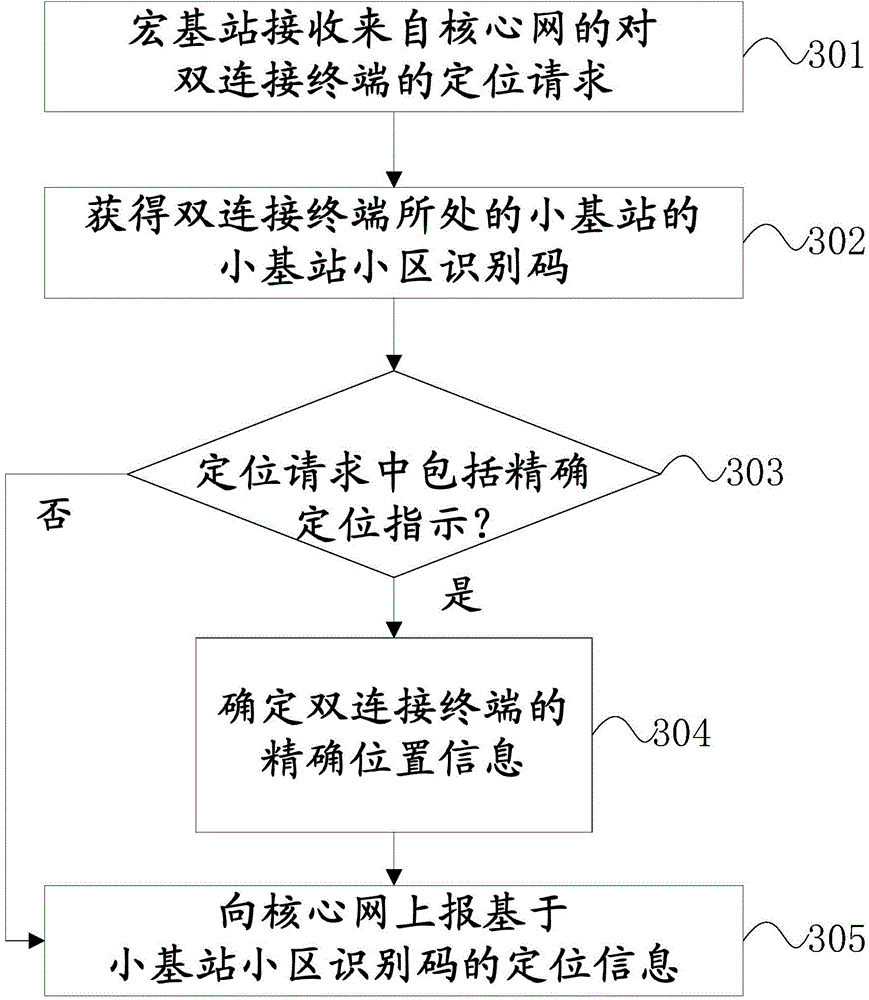Method and network element for positioning terminal
A technology for locating terminals and terminals, applied to services based on location information, electrical components, wireless communications, etc., can solve problems such as inaccurate location information and affecting differentiated services for operators
- Summary
- Abstract
- Description
- Claims
- Application Information
AI Technical Summary
Problems solved by technology
Method used
Image
Examples
Embodiment Construction
[0028] The technical solutions of the present invention will be described in further detail below with reference to the accompanying drawings and embodiments.
[0029] The flow chart of an embodiment of the method for locating a terminal of the present invention is as follows figure 1 shown.
[0030] In step 101, the macro base station receives a positioning request for a dual connectivity terminal from a core network. The location request may be sent by the MME (Mobility Management Entity, mobility management entity) of the core network to the macro base station through a Location Reporting Control message. A dual-connect terminal works like this figure 2 shown. The dual connectivity terminal is respectively connected to the macro base station and the small base station, and the macro base station (MeNB) carries service 1, such as http service, and the small base station (SeNB) carries service 2, such as FTP service.
[0031] In step 102, the macro base station obtains t...
PUM
 Login to View More
Login to View More Abstract
Description
Claims
Application Information
 Login to View More
Login to View More - R&D
- Intellectual Property
- Life Sciences
- Materials
- Tech Scout
- Unparalleled Data Quality
- Higher Quality Content
- 60% Fewer Hallucinations
Browse by: Latest US Patents, China's latest patents, Technical Efficacy Thesaurus, Application Domain, Technology Topic, Popular Technical Reports.
© 2025 PatSnap. All rights reserved.Legal|Privacy policy|Modern Slavery Act Transparency Statement|Sitemap|About US| Contact US: help@patsnap.com



